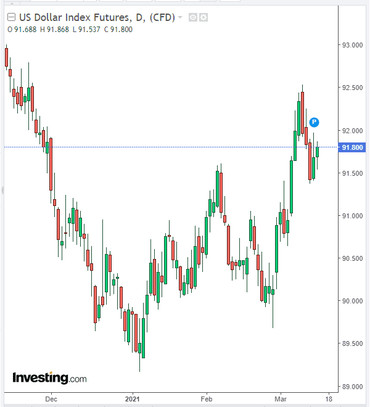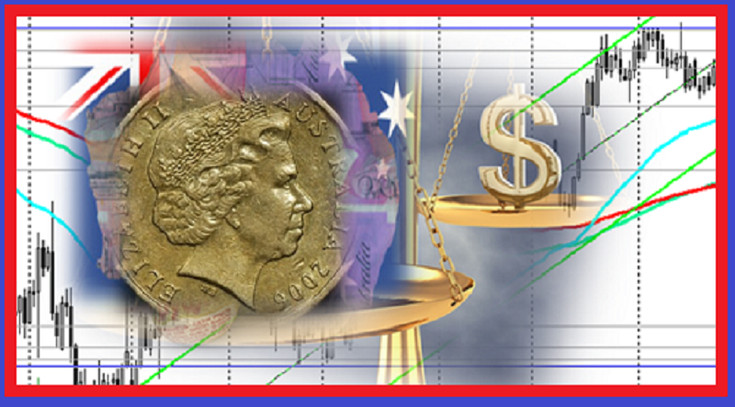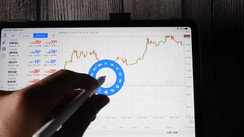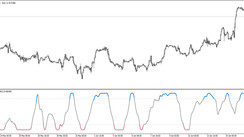The Australian dollar fell sharply during today's Asian session. Speaking at the conference on business analytics, RBA head Philip Lowe said that "the Central Bank will continue to support (the economy) until the target levels for employment and inflation are reached". “The challenges we face are great”, Lowe said, adding that it will take “some time” to achieve employment and inflation targets.
Following the results of the last Tuesday meeting, the RBA kept the key interest rate at a record low of 0.10%, also maintaining the target levels for the yield of 3-year government bonds and the terms of the bond purchase program.
In an accompanying statement, the bank's executives said that it is not worth counting on an early tightening of policy, at least until the target levels for full employment and inflation (in the region of 2%-3%) are achieved. According to their estimates, this will take at least 3 more years, and the regulator indicated 2024 as the earliest date. “The growth of wages should be much higher than now”, the bank said.
The leaders of the RBA also confirmed that they will continue to aggressively control the situation with the yield of government bonds, preventing its excessive growth, which means increasing the volume of purchases of long-term bonds, if necessary.
On Tuesday (at 00:30 GMT) the minutes from this meeting of the RBA will be published, which may again cause an increase in volatility in the AUD quotes, especially if the report contains new unexpected information.
The Australian dollar, probably, could weaken today and fall in the pair AUD / USD even more, if not for the strong macro statistics, which came from China this morning. Economic activity in China for the January-February period rose sharply over the same period last year, when the coronavirus pandemic paralyzed business and manufacturing, according to data from the country's National Bureau of Statistics, released at 02:00 (GMT).
Industrial production, investment and consumption have grown since the beginning of this year, exceeding pre-crisis levels. Industrial production rose 35.1% in January-February over the same period last year, while retail sales, an important indicator of consumption in China, jumped 33.8% in January-February. Investments in fixed assets in the first two months of the year increased by 35.0% compared to the same period of the previous year. Compared to January-February 2019, investments increased by 3.5%.
China is the largest buyer of raw materials and a supplier of the widest range of finished products to the world commodity market. Therefore, the improvement in China's macroeconomic indicators, as a rule, positively affects the positions of commodity currencies such as the Canadian, New Zealand and Australian dollars. To a greater extent, this applies to the Australian dollar, since China is Australia's largest trade and economic partner.
Market participants trading in the Australian dollar will also be attracted this week by the publication on Thursday (at 00:30 GMT) of data from the Australian labor market, which is one of the priorities for the RBA in determining the parameters of monetary policy.
The growth of the indicator (employment rate) has a positive impact on consumer spending, which stimulates economic growth. A high reading is positive for the AUD, while a low reading is negative.
Also at the same time, the Australian Bureau of Statistics will publish a report on the unemployment rate. The growth of the indicator indicates the weakness of the labor market, which leads to a weakening of the national economy. The decline in the indicator is a positive factor for the AUD. Forecast: unemployment in Australia in February was at the level of 6.3% (against 6.4% in January, 6.6% in December, 6.8% in November, 7.0% in October). In general, the indicators cannot be called positive yet. However, in other large economies, the labor market has deteriorated on an even larger scale due to the coronavirus.
The leaders of the RBA have repeatedly stated that, in addition to the situation in international trade, the Australian economy and the central bank's monetary policy plans are influenced by indicators of the level of household debt and expenditures, the growth of workers' salaries, as well as the state of the country's labor market.
If the values of the indicators turn out to be worse than forecast, then the Australian dollar may significantly decline in the short term. Better-than-expected data will strengthen AUD in the short term.
Meanwhile, the US dollar has strengthened during today's Asian session, continuing to receive support from the growing yields on US government bonds.

As of this writing, DXY futures are traded near 91.80 mark, 12 pips above today's opening price.

Meanwhile, market participants are cautious ahead of the Fed meeting, which ends on Wednesday. Economists believe that rising bond yields alone are unlikely to support a stronger dollar. Their growth reflects the improved outlook for the economy, as previously announced by the Fed.
At the same time, the results of the Fed meeting may provoke an increase in the volatility of US Treasury yields and dollar quotes, if the markets consider Jerome Powell's statements to be strong enough signals about the inclination to soft politics. Investors are awaiting confirmation from the head of the Fed that interest rates will remain low for a long time, but high rates of vaccinations and an increase in fiscal stimulus could lead to higher GDP forecasts and lower unemployment forecasts. Still, according to many economists, inflation is unlikely to sustainably strengthen above the central bank's 2% target before 2023, so rates will not be raised until 2024. Thus, most likely, we should expect the resumption of the fall of the US dollar after the publication on Wednesday (18:00 GMT) of the Fed's decision on rates and the Fed's press conference.





